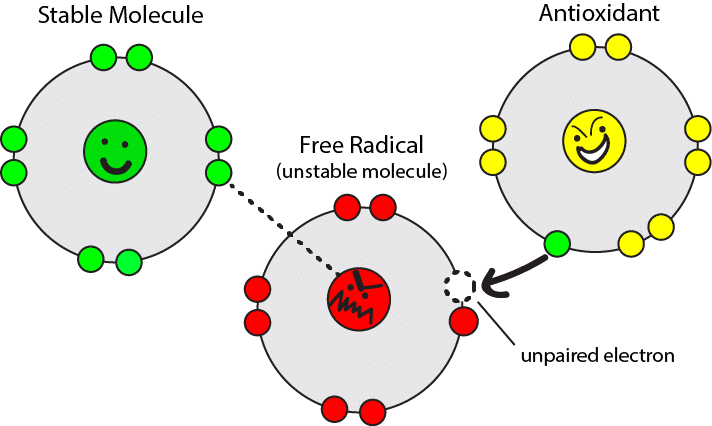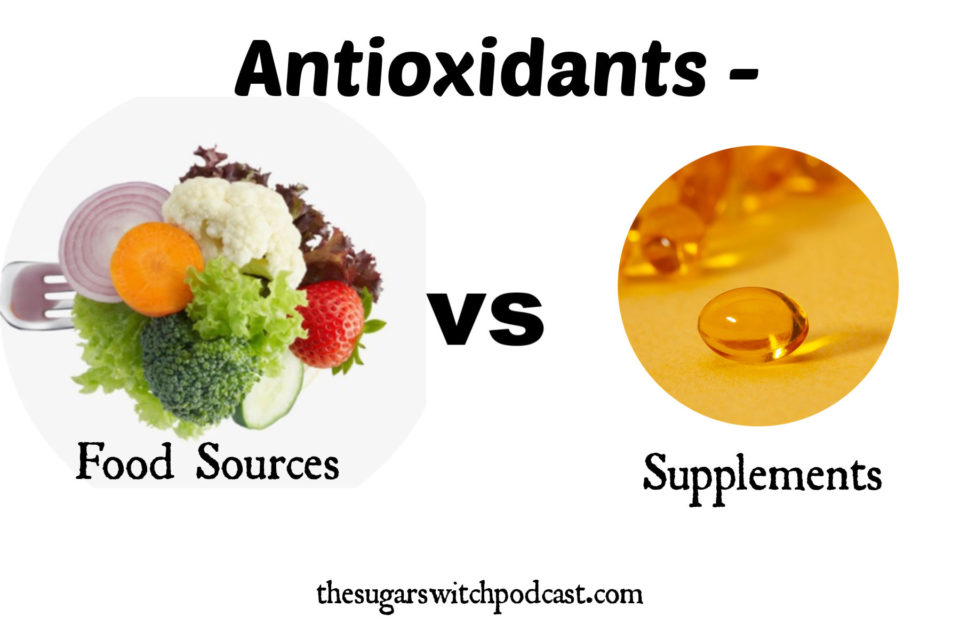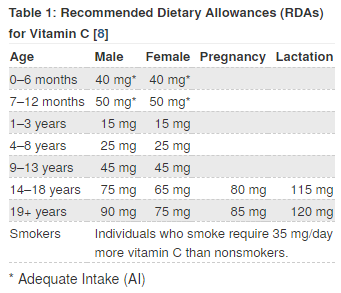You may have heard about antioxidants in the news or by talking to your doctor, and you may have heard many positive claims about them. I recently learned even more about antioxidants in my graduate class and decided I wanted to review how antioxidants work in our body and delve deeper into the research behind them, good and bad.
What are free radicals and antioxidants?
Free radicals are uncharged molecules that contain one or more unpaired electrons that require electrons to be taken from healthy molecules in order to become more stable. The taking of electrons from the healthy molecule, the process of oxidation, causes cells to become damaged. Here’s where antioxidants come in. Antioxidants are substances that delay or reduce oxidation by allowing themselves to be oxidized in the place of healthy molecules. Evan though free radicals don’t necessarily cause disease, but they can damage the cells and cause them to be weaker and more susceptible to disease (3). Unfortunately, as I learned in my class, there are a few ways that we can come into contact with free radicals, including breathing in oxygen, oxidation as we digest our food, some drugs, UV or X-rays, alcohol, cigarettes, pollution, pesticides, herbicides and high fat foods. Free radicals can also be produced when we exercise (3).

Do antioxidants prevent disease?
While many of the positive study results have been publicized about antioxidants, there is much research to be conducted about all aspects of antioxidants in health. For instance, it was stated that internal (endogenous) antioxidants could dull cell signaling and reduce oxidation during exercise, which could potentially prevent fatigue. A newer concept, short-term infusion of antioxidants could possibly even reduce production of allergic reactions. One compound, resveratrol, works indirectly to repair DNA and could improve chronic disease states such as type 2 diabetics, impaired metabolism, inflammation and hyper triglycerides (2). In addition, the combination of antioxidants like vitamin E, C, beta-carotene, and zinc could reduce the risk for advanced macular degeneration by up to 25%. However, antioxidants have not been found to prevent disease all together (1).
On the other hand, high dosages of antioxidants in a supplemental form can have detrimental side effects that outweigh the positive aspects. It’s important to watch for high dose supplements like vitamin E, which could increase the risk for strokes or prostate cancer or high doses of beta-carotene that could increase the risk in smokers for lung cancer. Also keep in mind that supplementation should not be used to replace a healthy diet or prescribed medication, especially without discussing the matter with your doctor or dietitian as antioxidants can interfere with nutrients and medications in taken in excess (1). As mentioned earlier, more research should be done to determine the effects of antioxidant supplementation as most antioxidant therapies use compounds that require higher concentrations to be effective, yet this can lead to negative risk factors (2).

What foods have the most antioxidants?
Most dietitians will tell you, food first and supplements second. With a balanced diet and your focus on fruit and vegetables, you should be getting most of the vitamins, minerals, and even antioxidants that you would need. The chart below describes possible sources of antioxidants and what foods you can find them in:

(3)
Resources:
- Antioxidants: In Depth. (2016, May 4). Retrieved from
https://nccih.nih.gov/health/antioxidants/introduction.htm.
2. Schmidt, H. H., Stocker, R., Vollbracht, C., Paulsen, G., Riley, D., Daiber, A., &
Cuadrado, A. (2015). Antioxidants in Translational Medicine. Antioxidants & Redox Signaling, 23(14), 1130–1143. doi: 10.1089/ars.2015.6393
https://www.liebertpub.com/doi/pdf/10.1089/ars.2015.6393
3. Wolfram, T. (n.d.). Antioxidants – Protecting Healthy Cells. Retrieved from
https://www.eatright.org/food/vitamins-and-supplements/types-of-vitamins-and-nutrients/antioxidants-protecting-healthy-cells.













